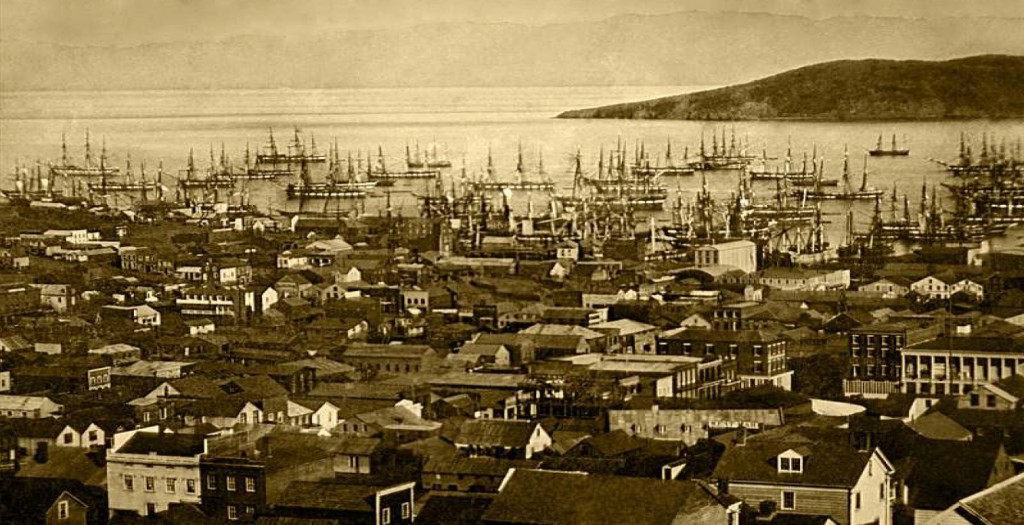
The California gold rush, as its name indicates, prized speed above all else. Clipper ships, designed for quick and few voyages, were the perfect vessel for the gold rush, which began in 1848. They were fast, yacht-like vessels, with three masts and a square rig. They were generally narrow for their length, could carry limited bulk freight, small by later 19th century standards, and had a large total sail area. At the ‘crest of the clipper wave’ year of 1852, there were 200 clippers rounding Cape Horn.
George Foster Jones wanted to try his luck panning for gold was eager to improve his fortunes by heading to California. Land travel to the West was slow, dangerous, and impractical. The sea was the best and fastest mode of transportation. However, this was in the time before the Panama Canal, which meant that some travelers would have to sail down the East Coast from New York to the Isthmus of Panama and cross by land to the other side, where a waiting ship would take them to California to complete the journey. Anything was endurable for these so-called “Forty-Niners”, in order to reach the potential goldmines of California.
While the Isthmus route was difficult because it involved two ships and a land crossing, it was not nearly as difficult as the rounding of Cape Horn. The route around the tip of South America was fraught with danger. There were 17,000 miles of ocean between New England, Cape Horn and on to California, and in those miles were almost every type of climate known to exist, the gusty, cold North Atlantic, the calms of the Tropics of Cancer and Capricorn, the frigid, violent Antarctic gales off the Cape, and then almost an exact reversal as the ship sailed up the west coast of South America and on to San Francisco. The voyage was long, averaging six months. Once in San Francisco, passengers and crew alike abandoned the vessels, leaving a crowded harbor, as seen above. Many ships were taken apart, their wood used for buildings.